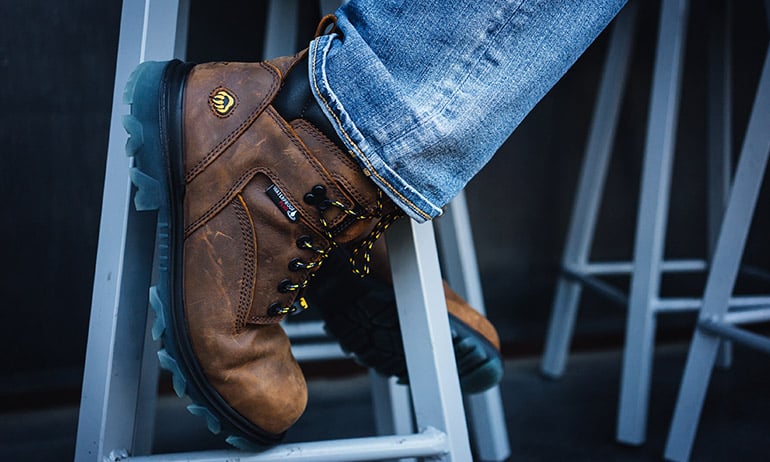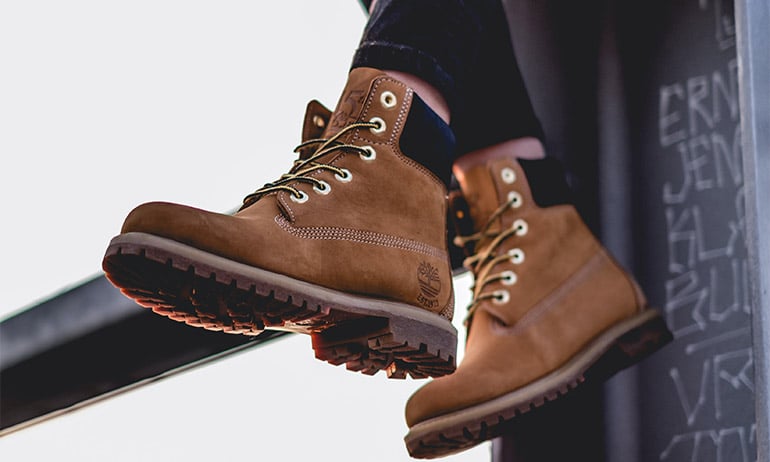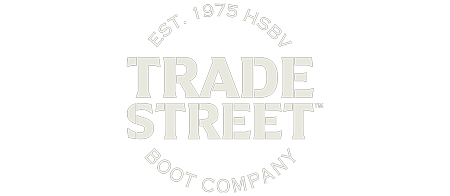Jun 21, 2021 / Safety Toe Footwear
5 Signs You Have Worn Out Work Boots

When you’ve got a favorite pair of boots, it can be tough to say goodbye and you may be looking into how to restore leather boots. At the first sign of wear and tear, you might try to prolong their lifespan with extra conditioners, waterproof sprays, and cautious care.
But in reality, you will probably need to replace your work boots every six to twelve months, (dependent on type of use and frequency). It’s just the work boot circle of life.
If you’re unsure whether or not to toss or buy new work safety boots, we have a few tips for you. Check out below for some tell-tale signs of worn out work boots.
#1 Outer Damage—An Immediate Sign
If your work boots begin to show damage on the outside, they most likely have damage in other places, too. Outer wear almost guarantees a boot’s upcoming expiration.
However, even easily visible signs of damage can slip past our attention. Examine these areas of your work boots for any distress:
- Outsole Damage – Check the rim that traces the top half of your foot (it’s usually made of rubber). See any spots of tearing or chipping away? Outsole damage comes from long-term or repeated usage and scuffing. Over time, it can wear down to holes and cause loss of insulation and protection.
- Uppers Separation or Talking – No, we don’t mean your boots will actually chat with you. “Talking” in boot world means the uppers are separating from the soles—i.e., your toe area will look like an open mouth. This is a sure sign to replace any worn work boots.
- Holes or Openings – Look over all outer areas of your boots, front to back. If you notice any holes or punctures, it’s time for replacements. That’s a recipe for hazards like leaking chemicals, poor insulation, and reduced electric hazard protection.
#2 Sneaky Signs You Might Not See
Out of sight, out of mind? Not for your work boots. Wear and tear can come in many forms that you may not first catch. Rough terrain and constant use can lead to damage on the undersides and middles of your work boots.
Starting to experience slipperiness, loss of height, or a strange fit in your shoes? You might be facing one of these boot issues:
Worn Down Traction
You could just blame it on icy weather or clumsiness. But if you’re suddenly slipping and sliding in your work boots, you probably have reduced traction.
Check underneath your boots to see if any ribbed or spiked surfaces have worn down. If so, you need to upgrade for safety. And if traction reinforcements aren’t an option (such as spiked pull-ons or heel grippers), then new work boots are in the books for you.
And remember—traction isn’t only necessary for wet working conditions. Any smooth industrial flooring or surface can be a hazard without proper gripping.
Midsole Damage
The midsole is an underrated hero of work boot function. As the layer between the insole and outsole, it provides extra support and cushion to each step.
Unfortunately, midsoles can wear down faster than other boot parts and are not easily replaceable. Here are some signs the midsole on your work boots is giving out:
- Wrinkly or compressed appearance to the outer midsole area
- Decreased height when wearing your boots
- Less cushion and shock absorption when walking
#3 The Guards Go Off-Duty
The entire point of safety work boots is to prevent you from incurring an injury. Between electric currents, weather, and heavy objects, your feet face countless risk factors at work.
This is why when protective measures start to wear down, you need to ditch your old boots fast. Frostbite and toe injuries shouldn’t be part of your job description. You should always have functional guards against any feet safety risks in your work environment.
Read on for signs of damage to your work boot’s protective technology:
Physical Protectors
Most work boots have built-in protective gear, either in metal or plastic form. When accidents or extended use wear this gear down, you’re looking at potential foot injuries.
If a cinder block recently slipped out of your hands and onto your boots, check for damage in these areas:
- Loss of Toe Guard/Dented Toe – Signs of toe guard damage depend on the material used. Worn out steel toe boots will show obvious dents or crumpling if damaged. But for composite and non-metal toe guards, the damage may not be obvious until it’s too late. Your best bet is to replace your work boots if anything heavy lands on your feet.
- Loss of Metatarsal Guard – Like toe guards, metatarsal protectors (located on the tops of your feet) can fail after one incident. If you feel dents along the tops of your shoes or you see your guards poke through, you must replace your work boots.
Water Damage
Construction, hiking, and other outdoor jobs can require intensive hours bracing the elements. If you trudge around often in the snow or rain, your boots are highly susceptible to water damage over time.
Look out for these classic signs of water-based boot issues:
- Leakage – You’ll probably feel this one before you see it. Damp and cold socks aren’t just uncomfortable, they can be dangerous. Excess moisture can reduce body temperature and cause foot fungus and infections. If you got leaks, you’ve got worn out boots.
- Other Signs of Water Damage – An occasional salt or water stain isn’t the end of the world. But if you feel cracking and brittleness across your boot’s surface, consider buying new boots before leakage develops. In particular, leather boots are vulnerable to water damage.
- Electric Protection Loss – Work with electricity sources or wires? You already know to buy Electrical Hazard rated safety boots. But if you accidentally expose these boots to wet conditions or overuse, you might reduce their effectiveness. In this case of damage: if you have a doubt, throw them out.
#4 Developing Pain or Discomfort
Sore hamstrings after a tough day are one thing. But a building pain in your feet, knees, or even your back? Worn out work boots may be the culprit.
When a pair of boots are past their expiration, they don’t always give you clear signs. A new and continuous bodily pain following work could mean it’s time to chuck your boots in the trash.
Here are some devious ways your boots may be behind your aching:
Loss of Support
Think of work boots as scaffolding—they are there to support and guard your feet from outside damage. Without scaffolding, the “building” of your feet will start to crumble.
If your ankles are suddenly hurting after each shift, start by examining your boot’s shape and hold. Here are a few areas where structural support loss can occur:
- Angling and Tilting – Boot angling reveals itself with a simple test: when placed on a flat surface, the upper shaft will tilt left or right instead of standing straight. This can lead to improper body alignment on the job, which will trickle down to back pain.
- Sagging – If the upper shaft of your boot is sagging or wrinkled, your feet won’t receive as much bracing with movement. Rolled ankles aren’t worth keeping an old pair for two months longer.
- Worn Insoles – Most people add insertable insoles to their work boots. But if your boots are at least six months old and their natural insoles are torn up or flat as a pancake? You might consider buying a new pair to prevent arch pain or plantar fasciitis.
Bendy Boots
A flexible shoe sounds like a good thing, at first. Who wouldn’t want a little more wiggle room? But with work boots, extra flexibility means loss of supportive structure that prevents movement injuries (think sprains, muscle strains).
The best way to check for this? Do a flexibility test. Hold the boot shoelaces up and bend the toe section back towards the heel. If they touch easily, it’s time to replace your boots.
#5 Run the Numbers
Depending on how much you care for your boots will determine how often you should replace work shoes. An ounce of prevention is worth a pound of care. And with work boots, that means eliminating any potential damage before it leads to pain or danger.
If you’ve owned the same work boots for a year or longer without any noticeable wear, it’s worth checking your usage stats. A few markers that could indicate your boots are near their life’s end:
- Walking between three hundred to five hundred total miles
- Daily exposure to rain, mud, and wetness
- Consistent handling of heavyweight objects
When to Give the Boots the Boot
At the end of the day, your work boots are there to help, not harm. And sometimes, that can mean saying goodbye to a beloved pair that’s clocked in their time. Don’t let the love for your old boots lead to an injury on your job site.
To avoid most degradation issues, consider investing in high-quality work boots. Here at Boot World, we have a massive selection of women's and men's steel toe boots that will hold up to repeated weather exposure, moisture, and heavy usage. Choose a first-rate pair with durable materials, and you’ll put off seeing your favorite boots wear down before their time!
Sources:
- Hix. How Often Should You Replace Work Shoes? (spot the signs…).
https://www.hixmagazine.com/how-often-should-you-replace-work-shoes/ - Work Boot Guide. How Long Do Work Boots Last?
https://workbootguide.com/how-long-do-work-boots-last/ - Safety Jogger Works. Electrical hazard (EH) rated safety boots.
https://www.safetyjogger.com/en/eu/technical/electrical_hazard - Wilmes Risk Control Services. Why You Can’t Walk 500 Miles in Work Shoes.
http://wilmes.co/cant-walk-500-miles-in-work-shoes/ - EHS Today. Protective Footwear: Know When to Give Safety Shoes the Boot.
https://www.ehstoday.com/ppe/foot-protection/article/21913563/protective-footwear-know-when-to-give-safety-shoes-the-boot
Reviewed By:
Ed Stone brings over 45 years of footwear knowledge and passion to his role as President of Boot World, a family-owned company and an industry leader in safety and occupational footwear. A second generation "shoe dog” Ed's footwear knowledge is unparalleled, serving as an informal advisor for some of the worlds largest footwear brands including Wolverine, Timberland PRO, and Reebok Works.
A lifelong Southern California resident, and ardent conservationist, Ed enjoys hiking and open water swimming.

















